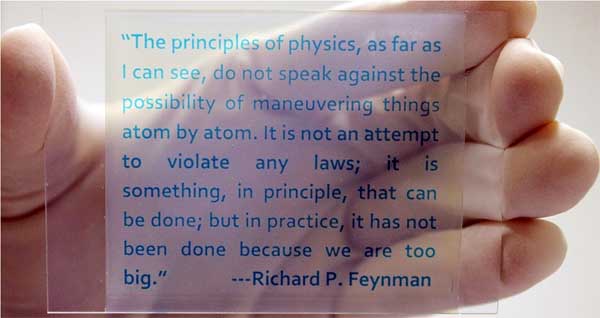Rewritable Paper Prints with Light, Not Ink
![]() Print this Article | Send to Colleague
Print this Article | Send to Colleague
A new type of paper can be used and reused up to 20 times. What’s more, it doesn’t require any ink. Its designers think that this new technology could cut down on tons of waste — and save people tons of money.
A special dye embedded in the paper makes it printable and rewritable. The dye goes from dark to clear and back when chemical reactions move subatomic electrons around. The paper’s color-change chemical undergoes what are known as redox reactions. Redox is short for reduction and oxidation.
Oxidation steals one or more electrons from a molecule. Rust is an example of oxidation. "When iron rusts in air, its electrons move to nearby oxygen atoms," explains Yadong Yin, a chemist at the University of California, Riverside, Calif., USA.
Reduction is the opposite of oxidation. It adds one or more electrons. As rust oxidizes iron, the process reduces those nearby oxygen atoms. That means that they gain electrons, which have a negative charge.
When dye in the new paper is oxidized, it appears blue, red, or green (color depends on which dye is in the paper). When the dye on some parts is reduced, color on those areas disappears. Controlling these two reactions makes it possible to print on, erase, and reuse the new paper.
The starting base of the "paper" used in the study was a clear plastic. That allowed it to show how the paper works. But the technology also could be used with glass or conventional paper made from wood pulp — as long as each contains the redox dyes and the other chemically active components.

The paper starts out with all of the dye oxidized, and therefore colored. Nano-scale crystals of titanium dioxide—each around a billionth-of-a-meter in size—cover the paper’s surface. To print something, scientists cover this solid-color paper with words or an image printed on a see-through base. You might think of it as a stencil, or mask. Next, the scientists expose the masked surface with ultraviolet (UV) light. The light triggers a reduction reaction on sections of the paper not shaded by the printing. So it removes color from those sections.
Only the oxidized parts that had been covered by the stencil stay dark, explains Yin. Those areas become the "printing." So the writing is done chemically, using light. The process chemically reduces dye in all of the areas that should be blank space. The tiny size of the surface nanocrystals lets electrons move easily out of them and into the dye. In effect, Yin explains, when the crystals are exposed to the UV light, "electrons are kicked out."
Afterward, other organic materials in the paper give up electrons. Those electrons fill "holes" made when electrons left the molecules of titanium dioxide. Now the nanocrystals can work again.
To start over, the paper needs to turn back into a solid-colored sheet. Oxygen in the air makes this happen. That oxygen pulls electrons from the "unprinted" areas. But you don’t want this happening seconds after you write on the paper. People need time to read the printing first.
Special cellulose in the paper slows that erasure. Among other things, this cellulose makes it hard for oxygen to react with the dye. Printing can remain visible for two days or so, Yin’s research team has shown.
On the flip side, some people may want to reuse the paper right away. Heating speeds the erasure time. At the right temperature, oxidation can return the entire paper to its solid color in five minutes or less. Yin’s team at UC-Riverside describes its new, rewritable paper in the Dec. 2, 2014, issue of Nature Communications.
Yin’s group smartly chose ingredients for the new technology so that it will operate well, says Howon Lee. This makes the new paper "significant," he says. In other words, the paper can be printed on. It doesn’t turn dark again immediately. And the paper can be reused.
Lee is an engineer at Seoul National University in Korea and did not work on the new paper. But he knows Yin’s work. In fact, Lee worked with Yin and other scientists in 2009 on another project. That study explored how light interacts with nanostructures. This happens naturally on butterfly wings and peacock feathers. That team wanted to learn more about the science of this natural process. The group published its findings in Nature Photonics.
Yin’s current project is "more like a delicate engineering work," Lee now says. It does explore some basic science. But beyond that, he explains, it puts science principles to work. "The rewritable paper project aims to help people in real life," Lee says.
The paper can work with blue, green, or red dye. But full color printing is not yet practical. To do that, scientists need a way to use a combination of dyes. They also will need to vary how much light different parts of the paper get during printing.
Another issue is that someone couldn’t read an article and then decide to save it on the new paper. The whole paper still would darken in two days or so.


